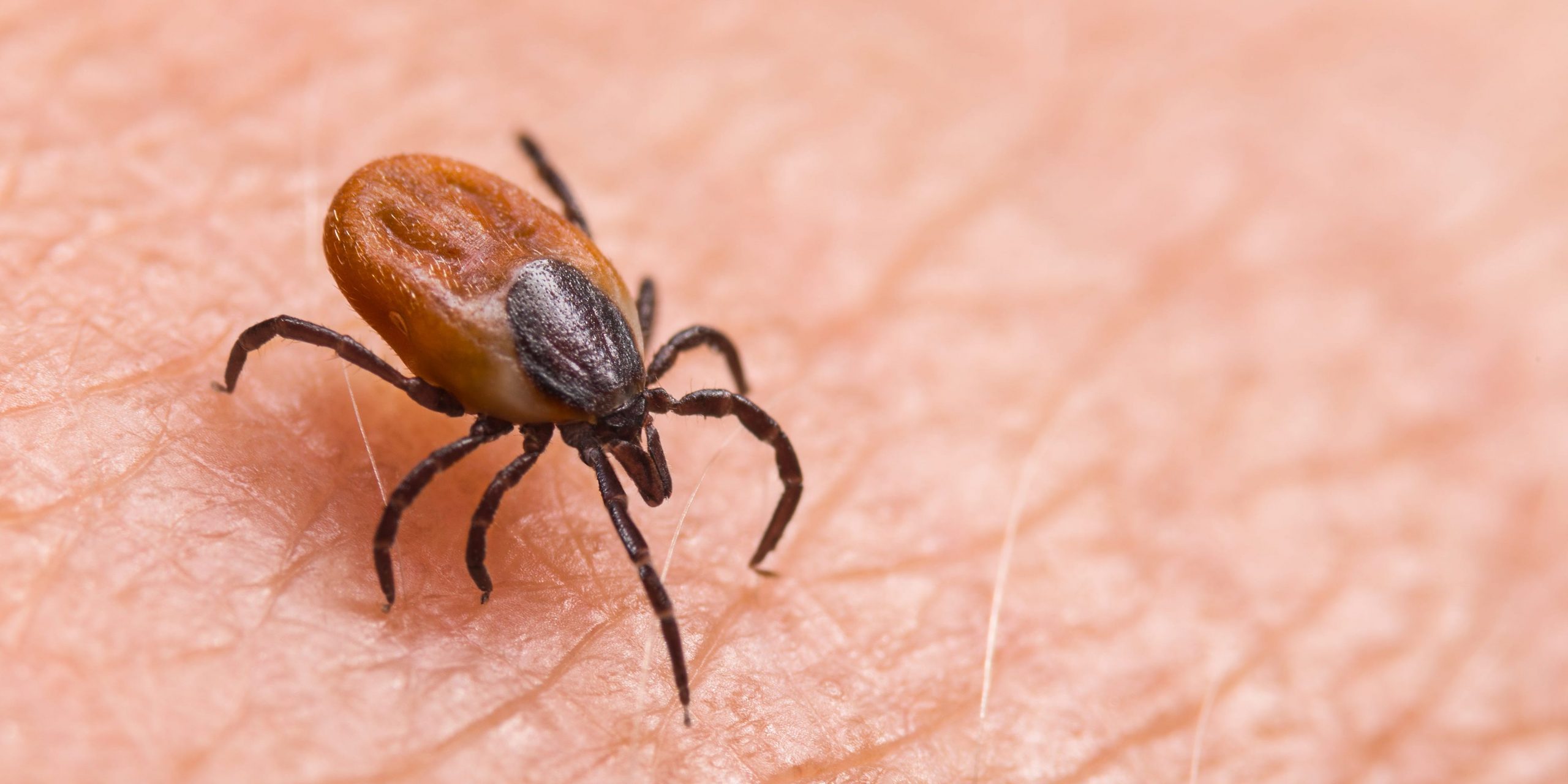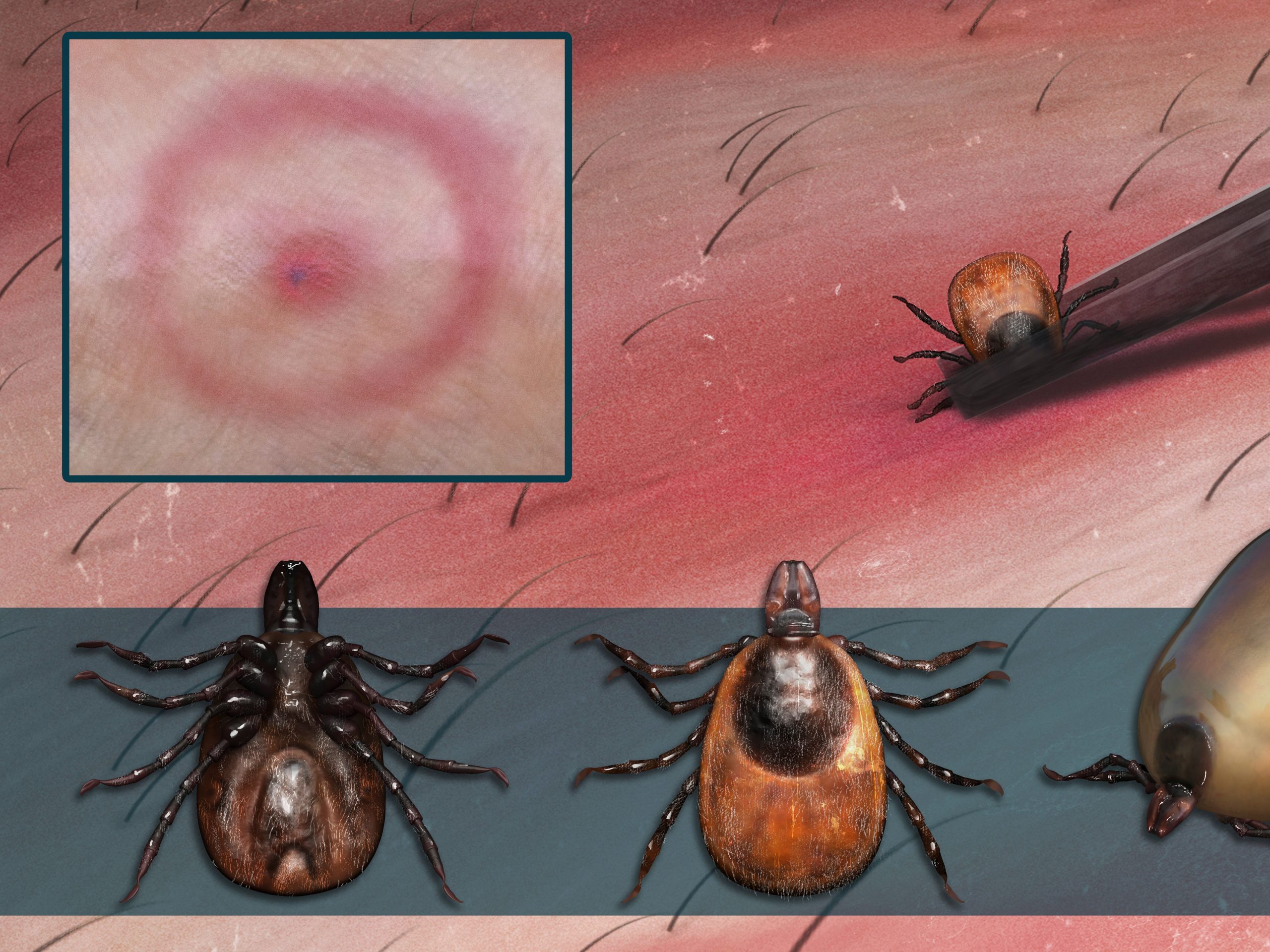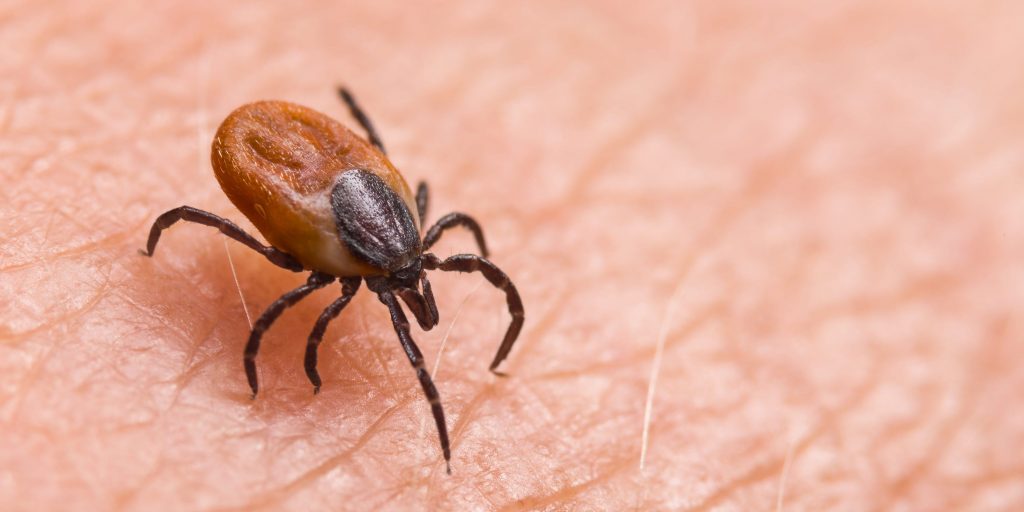
Photon Illustration/Stocktrek Images/Getty Images
- Deer ticks exist in wooded areas and carry bacteria that can cause infection.
- A bite often appears as a bullseye shape on the skin and it should be treated immediately.
- If you spot a tick on your body, remove it with tweezers and save it for your doctor to see.
- Visit Insider's Health Reference library for more advice.
A bite from a deer tick (also called a blacklegged tick) can potentially cause a harmful bacterial infection known as Lyme disease. While not all ticks carry the bacteria that causes Lyme disease, it's important to be careful, especially in the summer months as deer ticks become more prevalent.
The percentage of deer ticks carrying the Lyme disease bacteria varies per region, and it can range from 2 to 25% of nymphs [young deer ticks] or 5 to 60% of adults, says Thomas N. Mather, PhD, professor of public health entomology at the University of Rhode Island and director of the TickEncounter Resource Center.
Deer ticks are commonly found around the northeastern, Mid-Atlantic, and upper midwestern states. You are likely to encounter them doing outdoor activities like gardening, hiking, and hunting because they tend to live in yards, wooded areas, and low-growing grasslands.
Here's how to recognize a deer tick bite, what to do if you find a tick, and the symptoms of Lyme disease to watch out for.
What does a bite from a deer tick look like?
"The tick bite is usually a small, pea to quarter-sized raised red area. In some people it may cause more of a reaction, [like a bee sting or maybe cellulitis, a bacterial skin infection, " says Mather. The rash may also get bigger and have a visible center, which resembles a bull's-eye.

Photon Illustration/Stocktrek Images/ Getty Images
If the initial bite grows bigger than 5 cm in diameter over the course of five to eight days, it may be a sign of a tick-borne disease, says Mather. When you check for ticks, keep in mind that adult deer ticks are about the size of a sesame seed, while nymph deer ticks are closer to a poppy seed, making them very difficult to spot initially.
Aside from knowing what to look for, you also need to know where to look. You might instinctively check exposed skin areas like arms, chest, behind the ears, and along the hairline, but don't forget the areas below the waist.
According to Mather, nymph ticks usually latch on ground level and crawl upward, so you should also examine skin folds, underwear seams, and waistbands. They can also crawl under shirts, so check your sleeves, collar seams, and bra straps as well.
What should I do if I get bit by a deer tick?
Using a pair of tweezers, grab the tick as close to the skin as possible. Pull it gently without twisting, then place it inside a small plastic bag.
"We advise people to hold on to the tick in a sealed and labeled ziplock," says Mather. "Freezing the tick is one good way to kill them and hold onto them. There's no need to crush or otherwise mutilate them as it just makes it harder for tick experts to help you" know if the tick is infected or not.
Mather recommends taking a clear, top-side picture of the tick to create a record of the encounter and make it easier for experts to extend their help.
Symptoms of Lyme disease
Deer ticks infected with the Lyme disease bacteria can spread it to your blood after being attached to you for about 24 to 36 hours.
The early symptoms of Lyme disease occur anywhere from about three days to one month after an infected deer tick bite. It usually manifests as flu-like symptoms, which include:
- A red rash that may be warm, itchy, or painful, which can get bigger over time - up to 12 inches across - and might resemble a bull's-eye
- Headache
- Fever and chills
- Fatigue
- Muscle and joint pains or aches
If Lyme disease is not treated, it may cause other symptoms such as severe headache and neck stiffness, inflammation of the brain and spinal cord, and pain and swelling in the muscles, joints, and bones. The earlier you get treated with antibiotics, the better chances of a full recovery, but it's not 100% fool-proof.
Insider's takeaway
Deer ticks are the primary transmitters of a bacterial infection called Lyme disease. Its early symptoms are similar to the flu, but one distinguishable sign is a red rash that may get bigger and resemble a bull's-eye.
Getting treated with antibiotics within 72 hours of removing a deer tick increases your chances of avoiding infection. If Lyme disease is left untreated, the infection can spread to your heart and nervous system.
